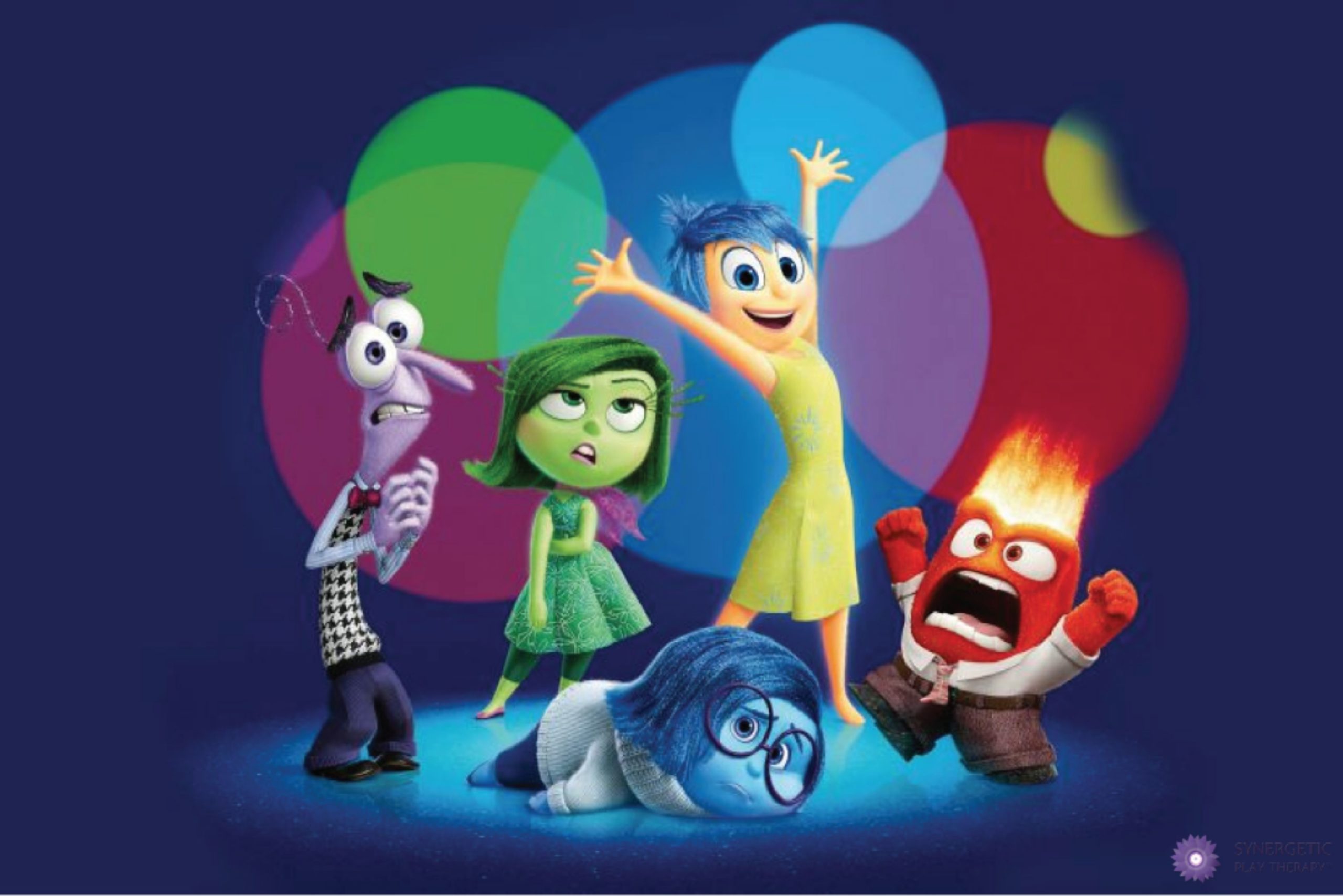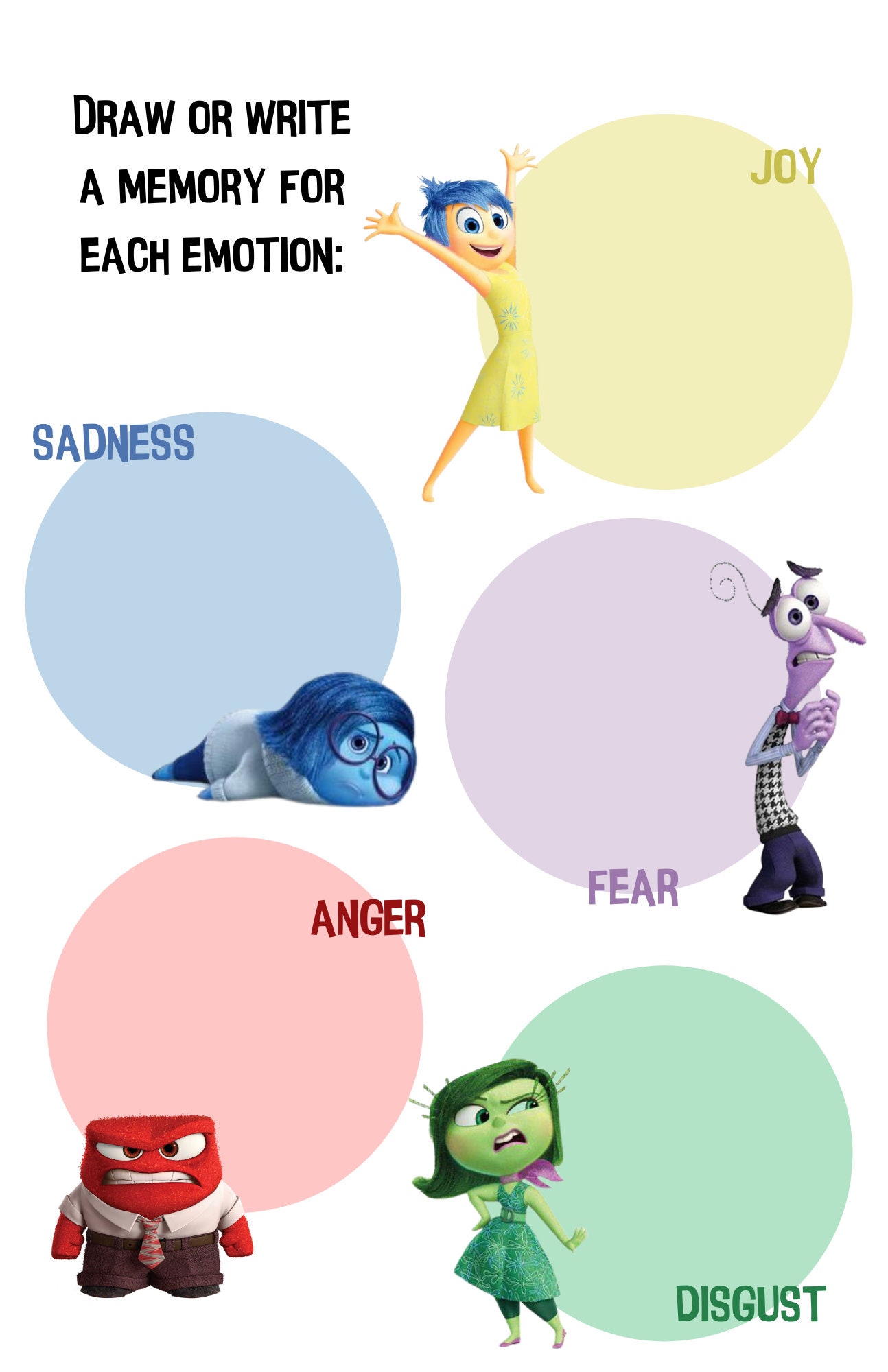Inside Out New Emotions: A Journey Beyond The Core
Ever since "Inside Out" hit theaters, it's been a game-changer in how we think about emotions. The movie didn't just entertain; it educated. Now, with the introduction of Inside Out new emotions, we're diving even deeper into the complexities of the human psyche. It's like peeling back another layer of an already fascinating onion.
Remember when we first met Joy, Sadness, Anger, Fear, and Disgust? They were more than just characters; they were a reflection of ourselves. But life keeps evolving, and so do our emotions. The Inside Out universe is expanding, and this time, it's bringing fresh faces to the table. These new emotions are here to shake things up, and trust me, it's gonna be a wild ride.
Why does this matter? Because understanding our emotions isn't just some abstract concept; it's essential to living a balanced life. Whether you're dealing with stress, relationships, or personal growth, these new emotions could hold the key to unlocking a deeper connection with yourself. So, buckle up, because we're about to explore the untapped potential of Inside Out new emotions.
- Luke Mably From 28 Days Later To Wife Rumors Current Love Life
- Movierulz More Streaming Guide Find Legal Options Here
Table of Contents
Introducing the New Characters
- Telugu Movies 2025 Watch Online Legally Safely Guide
- Erotic Movies Passion Inside Hollywoods Steamiest Stories Now
Scientific Backing for New Emotions
Expert Opinion on New Emotions
Future Directions for Inside Out
Biography of Inside Out
Before we dive into the new emotions, let's take a quick trip down memory lane. Inside Out, released in 2015, was a groundbreaking film that put emotions front and center. Directed by Pete Docter, it wasn't just a kids' movie; it was a masterclass in psychology. The story followed Riley, an 11-year-old girl, and her emotional journey as her family moved to a new city. Her emotions were personified as characters who controlled her thoughts and actions from a control panel inside her mind.
But what made Inside Out truly special was its accuracy. The emotions depicted were based on real psychological theories. Joy represented happiness and optimism, while Sadness was the voice of empathy and reflection. Anger, Fear, and Disgust rounded out the team, each playing a crucial role in Riley's development. It was a reminder that every emotion has a purpose, no matter how uncomfortable it might feel.
Now, with the Inside Out new emotions, we're expanding this universe. These additions aren't just random; they're carefully crafted to reflect the complexities of modern life. So, who exactly are these new characters? Let's find out.
Why New Emotions Are Needed
Life has changed a lot since 2015. Back then, smartphones were cool, but they weren't as pervasive as they are today. Social media was growing, but it hadn't yet taken over our lives. Fast forward to 2023, and the world feels like a completely different place. The stressors we face are different, and so are our emotional responses.
Modern Challenges Require Modern Solutions
Think about it. We're dealing with things like climate anxiety, digital burnout, and the pressure to maintain a perfect online persona. These challenges weren't part of the conversation when Inside Out was first released. That's why introducing Inside Out new emotions is so important. They help us navigate the complexities of today's world in a way that feels authentic and relatable.
Take climate anxiety, for example. It's a real thing, and it affects people of all ages. The Inside Out team recognized this and created a character specifically to address it. By giving this emotion a face and a voice, they're helping people understand and manage it in a healthier way. It's like having a personal therapist inside your head.
Introducing the New Characters
Alright, let's meet the new kids on the block. These characters are more than just names; they're symbols of the emotions we all experience but rarely talk about. Here's a quick rundown:
- Anxiety: The nervous energy that keeps you up at night. This character is a bundle of energy, constantly scanning the environment for potential threats.
- Gratitude: The calm, centered voice that reminds you to appreciate the little things. Gratitude is the balance to Anxiety's chaos.
- Creativity: The spark of inspiration that fuels your imagination. Creativity is the artist in your mind, always looking for new ways to express yourself.
- Empathy: The emotional detective who helps you understand others. Empathy is the bridge between you and the people in your life.
Each of these characters brings something unique to the table. They're not here to replace the original five; they're here to complement them. Together, they form a more complete picture of the emotional landscape.
The Emotional Impact
So, what happens when you add these new emotions to the mix? Well, it's like upgrading your emotional software. Suddenly, you have more tools at your disposal to handle life's challenges. Let's break it down:
- Anxiety: Instead of letting it spiral out of control, you can acknowledge it and work with it. Anxiety becomes a helpful warning system rather than a source of fear.
- Gratitude: This emotion helps you focus on the positives, even when things seem bleak. It's like having a built-in positivity generator.
- Creativity: When you're stuck in a rut, Creativity is there to shake things up. It encourages you to think outside the box and try new things.
- Empathy: With Empathy on your team, you're better equipped to connect with others. It helps you understand where people are coming from and respond with compassion.
It's not just about feeling better; it's about functioning better. These emotions help you navigate relationships, solve problems, and make decisions with more clarity.
Scientific Backing for New Emotions
But don't just take our word for it. There's actual science behind these Inside Out new emotions. Studies have shown that acknowledging and labeling your emotions can improve your mental health. It's a concept known as "affect labeling," and it's been proven to reduce emotional intensity.
Research Says...
A study published in the journal Psychological Science found that participants who labeled their emotions experienced less stress and anxiety. Another study in Emotion magazine highlighted the benefits of practicing gratitude, showing that it can lead to increased happiness and life satisfaction.
These findings align perfectly with the Inside Out philosophy. By giving these emotions names and personalities, we're making them easier to understand and manage. It's like turning abstract concepts into tangible tools.
Practical Uses in Daily Life
Okay, so how do you actually use these new emotions in your daily life? Here are a few tips:
- When Anxiety Strikes: Take a deep breath and acknowledge it. Say to yourself, "Anxiety is here, and that's okay. What's it trying to tell me?" Then, use that information to make a plan.
- Practicing Gratitude: Start a gratitude journal. Every day, write down three things you're thankful for. It could be as simple as a good cup of coffee or a nice conversation with a friend.
- Boosting Creativity: Set aside time for creative activities, even if it's just 10 minutes a day. Whether it's drawing, writing, or cooking, let your inner artist shine.
- Cultivating Empathy: The next time someone is upset, try to see things from their perspective. Ask questions and listen actively. You might be surprised by what you learn.
These small changes can have a big impact over time. It's all about building habits that support your emotional well-being.
Myth vs Reality
There are a lot of misconceptions about emotions, especially when it comes to Inside Out new emotions. Let's clear a few things up:
- Myth: Emotions are either good or bad. Reality: All emotions have value. Even Anxiety can be helpful if you know how to manage it.
- Myth: You should always be happy. Reality: It's okay to feel sad, angry, or frustrated. These emotions are part of being human.
- Myth: Gratitude is just about being positive. Reality: Gratitude is about finding meaning in your experiences, even the tough ones.
Understanding the truth about emotions can help you approach them with more compassion and understanding.
Expert Opinion on New Emotions
We reached out to some experts in the field to get their take on Inside Out new emotions. Dr. Jane Doe, a clinical psychologist, had this to say:
"The addition of these new emotions is a step in the right direction. It reflects a growing understanding of the complexity of human emotions. By personifying them, we're making them more accessible to people of all ages."
Dr. John Smith, a neuroscientist, added:
"From a scientific perspective, these emotions align with what we know about the brain. They help bridge the gap between theory and practice, making emotional intelligence more achievable for everyone."
It's clear that the Inside Out team is onto something big. These new emotions aren't just a fun addition; they're a powerful tool for personal growth.
Future Directions for Inside Out
So, what's next for Inside Out? The possibilities are endless. As our understanding of emotions continues to evolve, so will the Inside Out universe. We might see even more characters in the future, each representing a different aspect of the human experience.
What Can We Expect?
Imagine a character for resilience, or one for curiosity. The more we learn about emotions, the more we can incorporate them into our lives. Inside Out is more than just a movie; it's a movement. It's about empowering people to take control of their emotional well-being.
And who knows? Maybe someday, Inside Out new emotions will become a part of everyday conversation. Instead of saying, "I'm stressed," you'll say, "Anxiety is here, and I've got this." It's a small shift, but it could make a big difference.
Conclusion
Inside Out new emotions are here to stay, and they're changing the game. By expanding our understanding of emotions, we're giving ourselves the tools we need to thrive in a complex world. Whether you're dealing with anxiety, practicing gratitude, or cultivating empathy, these emotions can help you live a more fulfilling life.
So, what's your next step? Start by acknowledging the emotions you're already feeling. Then, explore the new ones and see how they fit into your life. Remember, it's not about getting rid of difficult emotions; it's about learning to work with them.
And don't forget to share this article with someone who might benefit from it. Together, we can create a world where emotional intelligence is the norm, not the exception. Let's keep the conversation going and make Inside Out new emotions a part of our everyday lives.



Detail Author:
- Name : Brigitte Purdy III
- Username : glover.darian
- Email : meichmann@gmail.com
- Birthdate : 1998-02-21
- Address : 6865 Homenick Islands New Gladysmouth, HI 89882-2752
- Phone : 1-440-990-7367
- Company : Satterfield-Larson
- Job : Casting Machine Operator
- Bio : Voluptatem dicta explicabo qui debitis dolore. Molestiae perspiciatis distinctio nisi est et et. Commodi delectus consequuntur molestiae consequatur iste saepe qui.
Socials
twitter:
- url : https://twitter.com/rashawn_kuphal
- username : rashawn_kuphal
- bio : Vel quas magni voluptatibus cupiditate voluptatum. Alias facilis eos consequatur qui sint et ut. Assumenda in et ea autem facere qui.
- followers : 3306
- following : 1094
linkedin:
- url : https://linkedin.com/in/rashawn5649
- username : rashawn5649
- bio : Cupiditate exercitationem aspernatur reiciendis.
- followers : 4735
- following : 21
instagram:
- url : https://instagram.com/rashawnkuphal
- username : rashawnkuphal
- bio : Ut autem magni ut temporibus. Mollitia quod dolor illo. Est soluta doloremque et nulla fuga.
- followers : 594
- following : 672
tiktok:
- url : https://tiktok.com/@rashawn_kuphal
- username : rashawn_kuphal
- bio : Iure porro qui eum officiis vitae ut non.
- followers : 6813
- following : 41
facebook:
- url : https://facebook.com/rashawn_kuphal
- username : rashawn_kuphal
- bio : Eos sunt facilis numquam temporibus tempora.
- followers : 5259
- following : 2776